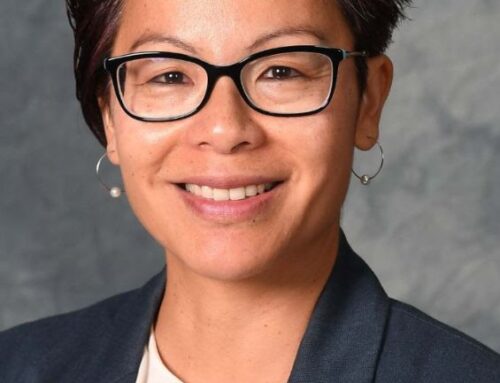Part II of II
Last month’s adoption feature centered on adoption problems faced by children in foster care. This month, we look at adopting the older child.
“It is a struggle [adopting an older child] but a struggle that is worthwhile. It can work,” says Elspeth Ross of the Adoption Council of Canada. “Some children cannot make an attachment but others come in very well at an older age. We should not dismiss the adoption option.”
Ross dismisses the attitude, ‘Love is all you need.’ “You need commitment and commitment grows through time. We’re not special, magical people; we’re committed people. And it’s important to keep in touch with support groups.”
The birth parents of an adopted child may be drug or alcohol addicted. Fetal Alcohol Syndrome (FAS) or Fetal Alcohol Effect (FAE –less severe), can produce extreme learning disorders.
Long-term effects
Ross knew when she adopted two of her sons that they had FAE. They cannot do math and cannot work with sequence, so telling time and counting money are impossible; their cause and effect reasoning is sometimes skewed.
Ross feels that society at least recognizes the problems of children who are physically disabled, whether blind, deaf or in need of a wheelchair. “Mental and emotional disabilities are more hidden.” Yet Ross experiences great joy from her sons’ tremendous creativity. “The kids give back to you.”
“Parents who adopt an older child, must be very comfortable with a child with a history,” asserts Joan Kosmachuk, executive director of Jewels for Jesus Adoption Agency in Mississauga, Ont. “Older adopted children need the freedom to own their past; they should not have to keep silent about it.
“It may be something as simple as ‘I went on the subway with my birth mum.” Nor does it have to be a “prettified past,” says Kosmachuk. “You can still remember, even if what you remember is not wonderful.”
Post-adoption services
Families need to be supported once they adopt a child, especially if that child is older or has special needs. Government cutbacks mean support services may be available for that child if she is in care but not once she has been adopted. Some children have been placed back into care to access those services.
The cuts of the last two budget years have drastically increased worker’s case loads and devastated post-adoption support services. Britain has freestanding post-adoption services which offer professional follow-up whenever it is needed (often during the teen years).
Most Canadian post-adoption services are offered by the adoption community itself. “Not everyone is a joiner, but every adoptive parent should know those resources are there if and when they need them,” says Ross.
Teens
In British Columbia, social workers are only required to look for homes for children 12 years and younger. “If children are more than 12 years they may be registered for adoption if they expressly ask to be adopted, or as part of a sibling group,” write Sheri Landles and Harriet Fancott in Focus on Adoption, June –August, 1996. They conclude: “This virtually eliminates any chance for teenagers [half the children in B.C. care] to be adopted.”
Teens are so hurt that bonding with anyone is difficult. Some may long to be adopted but others, especially older ones, are distrustful and display acting-out behaviour. For teens, group homes are a possibility, especially at a time when peers are so important.
“Adoption is not the only resource for these kids,” says Margaret O’Reilly of Metropolitan Toronto’s Catholic Children’s Aid. “Teens don’t want a new mum or dad but they do want to keep their sibling group in a permanent foster home and retain some contact with the birth parent(s).”
Hitting 19 for most young adults is a time to break away from the family. For Leah, a foster child in British Columbia, turning 19 “was the scariest time of my life. Suddenly I didn’t have anyone.”
Not enough money is available for the post-secondary education of those who graduate out of care at 18 but who opt for extended care and maintenance until they are 21. There are too few bursaries for too many students.
“Our society needs enlightened self-interest to help these kids [in permanent care],” asserts Gail Aiken, professor of Social Work at Ryerson Polytechnic University. “Too many kids will end up running on the streets or get trapped in the correctional system or become dependent on the [Child and Family Services] system in the future, if we don’t support them properly now.
“No child should ever be considered un-adoptable” says Aiken, “but some will need exceptional parents.” Dr. Aiken is the mother of two adult children whom she adopted when they were infants.
Recommendations
In 1995, Dr. Aiken conducted a survey to which 176 workers in the 42 of the 50 member societies of the Ontario Association of Children’s Aids Societies responded. Some private adoption licencees also responded. The recommendations of her survey were printed in the Journal of the Ontario Association of Children’s Aids Societies responded. The recommendations of her survey were printed in the Journal of the Ontario Association of Children’s Aid’s Societies, October, 1996.
Some of the key recommendations follow:
-Reduce the maximum temporary or Society wardship from the present two years;
-Reduce the number of times a child can be returned home to birth parents for another try;
-Limit to one year the time from bringing a child into care until completion of a permanent plan;
-Reduce the time allowed to achieve Crown wardship;
-Create clear criteria for granting birth parents access to Crown wards in order to remove barriers to adoption;
-Tighten restrictions on court adjournments;
-Require annual Crown ward reviews by the agencies for all children under 16, with agency funding connected to the reviews;
-Provide more support for people to help them take care of their own children and to prevent having to take them into care;
-Subsidize more adoptions to facilitate the adoption the adoption of children with special needs.




